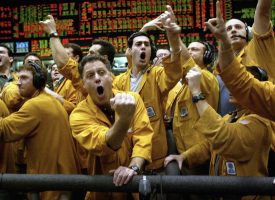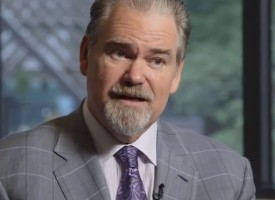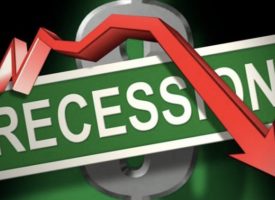As we continue to make our way through uncertain times, things are unlikely to return to normal anytime soon, but here is what we do know.
November 17 (King World News) – Danielle DiMartino Booth at Quill Intelligence: In the 1800s, rising political instability, economic distress, and religious persecution plagued Europe, fueling the largest mass human migration in the history of the world. Around 1890, it became apparent that Castle Garden, the New York State immigration station at the time, was ill-equipped and unprepared to handle the mass influx, pressing the Federal government to construct a new station. On January 1, 1892, the new structure on Ellis Island began receiving arriving immigrants. Accompanied by her two younger brothers, Annie Moore, a teenage girl fleeing Ireland, made history as the very first immigrant to be processed. Over the next 62 years, more than 12 million immigrants would arrive in the United States via Ellis Island.
Today, Ellis Island is a poetic symbol of the American Dream. But for QI, it holds a truly special place. Two sets of Danielle’s great-grandparents and all four pairs of Dr. Gates’s great-grandparents entered America there. New York was their gateway into a new life in a new world.
New York also is first up each month to report on U.S. regional manufacturing activity. The Empire State Manufacturing Survey, conducted by the Federal Reserve Bank of New York, is dispatched on the first day of each month to the same pool of about 200 manufacturing executives in New York State, typically the president or chief executive officer (CEO). About 100 responses are received. Most are completed by the tenth, although surveys are accepted until the fifteenth. Respondents come from a wide range of industries from across New York State. No one industry dominates the respondent pool. At 6.3, November’s headline slipped to a three-month low and missed expectations.
Investors default to manufacturing surveys when taking the pulse of the economic outlook. These soft data metrics not only come first in the reporting sequence each month, manufacturing is more cyclical than services and tends to be a more accurate guide of the variability of growth rates quarter in and quarter out.
The COVID-19 shock produced the most acute decline in the two-decade history of the Empire Manufacturing Survey. From March to May, on a zero breakeven scale, the headline General Business Conditions index averaged -49.4, worse than any three-month stretch during the Great Recession of 2007-2009. In June, the headline number stabilized (at -0.2), and from July to November registered uninterrupted expansion. The sustained improvement was one factor that helped bring down the consensus U.S. recession probability from 100% in July and August to 50% in September to 30% in October and November.
Don’t get us wrong — 30% recession probability is good news. But it’s still twice the median likelihood of 15% since Bloomberg began tallying expectations in 2012. With the COVID resurgence staring the U.S. in the face, uncertainty about the persistence of the recovery is high and risk of a backslide remains a front burner issue.
Turn back the clock with us 18 years to a concise comment delivered by then Fed Chair Alan Greenspan during his February 2002 semiannual monetary policy report to the Congress: “…the broad contours of the present cycle have been, and will continue to be, driven by the evolution of corporate profits and capital investment.” The Empire Survey does not inform about profits, but it regularly provides forward guidance on the capex front.
The Empire Future Capex index is a direct gauge for real nonresidential fixed investment, the capital investment line item in gross domestic product (GDP). Survey recipients are queried about capital expenditures increasing, decreasing or staying the same over the next six months. For a more complete analysis, we added two other guides for business investment activity — Empire Future Inventories and the New Orders-Inventories spread, useful guides that help inform the capex outlook.
Over the entire timeframe depicted above, Future Capex has had a higher correlation (.62) to the quarterly growth path of real nonresidential investment, compared to Future Inventories (.38) and the Current New Orders-Inventories spread (.38). From a slightly different angle of rolling three-year (or 12-quarter) correlations, we zoomed in to the most recent pre-COVID period ending in 2020’s first quarter. The result still had Future Capex (.70) in the correlation lead with Future Inventories a close second (.69) and Orders-Inventories a distant third (.52).
Our favorite normalizer, the z-score (deviation from the mean adjusted for volatility) was utilized to level the playing field between all three measures. Preliminary fourth-quarter indications reveal three distinctly different paths for U.S. capital expenditures. Future Inventories point to upside risk, the Orders-Inventories spread is closest to the moderate consensus projection, while Future Capex continues to imply a sluggish investment profile.
C-suite occupants are not foreign to the capital investment outlook of their respective firms. They know the path forward; they help draw it up. The dispersion in the Empire Manufacturing Survey’s three guides for U.S. business investment speaks to the uncertainty of the moment. We defer to the Future Capex index which is the least bullish of the lot.
It’s no aside. We applaud the second dose of good vaccine news. We remain uncertain as to the speed with which a rollout can staunch the U.S. economic damage given the virus will be left to continue spreading relatively unchecked vis-à-vis this past spring. Until further clarity on precise timing and acceptance is attained, conviction for a sustained economic recovery is unlikely to return to normal.
Also of importance…
Newmont Deal Is Very Big News
Dan O’Flaherty: “Eric, what we just announced is incredibly exciting. This is the second major acquisition of royalty assets from Newmont. As you know, when Maverix Metals was launched by former Pan American CEO, Geoff Burns, in his planning with Ross Beaty, the acquisition of Newmont’s first tranche of royalty assets in 2018 was a catalyst for enriching shareholders. Newmont sat with Ross Beaty prior to that first major acquisition because they wanted to confirm his long-term commitment to Maverix Metals. When Ross Beaty confirmed his long-term commitment, Newmont became a major shareholder of Maverix Metals in 2018.
The exciting thing is these are all gold assets and they are all in the Americas. This transaction dramatically enhances our near-term growth pipeline. And you have to remember, Eric, that Newmont agreed to this second major acquisition in part because they are so pleased as shareholders of Maverix Metals with what we did with the first group of royalty assets. Meaning, the first transaction acted as a key driver not only for a major move in our share price, but also in cementing this long-term and very fruitful relationship with Newmont. This demonstrates Newmont’s confidence that Maverix Metals can continue building on its momentum from the past few years and also continue to push its share price significantly higher over time.
Expect A Higher Share Price
And, Eric, this comes on the heels of Maverix announcing a record breaking third quarter across the board in terms of revenue, GEOs, net income, and cash flow. The bottom line is this puts Maverix Metals in a very powerful position going forward in terms of unlocking the value of this attractive portfolio of royalty assets that was just acquired from Newmont. This deal will help drive continued growth in revenue, earnings, cash flow, and attributable gold production well into the future, providing a clear path for near-term shareholder value creation. Maverix Metals, symbol MMX in Canada and the US.
To listen to Egon von Greyerz discuss the shortages in the silver market and much more CLICK HERE OR ON THE IMAGE BELOW.
© 2020 by King World News®. All Rights Reserved. This material may not be published, broadcast, rewritten, or redistributed. However, linking directly to the articles is permitted and encouraged.








